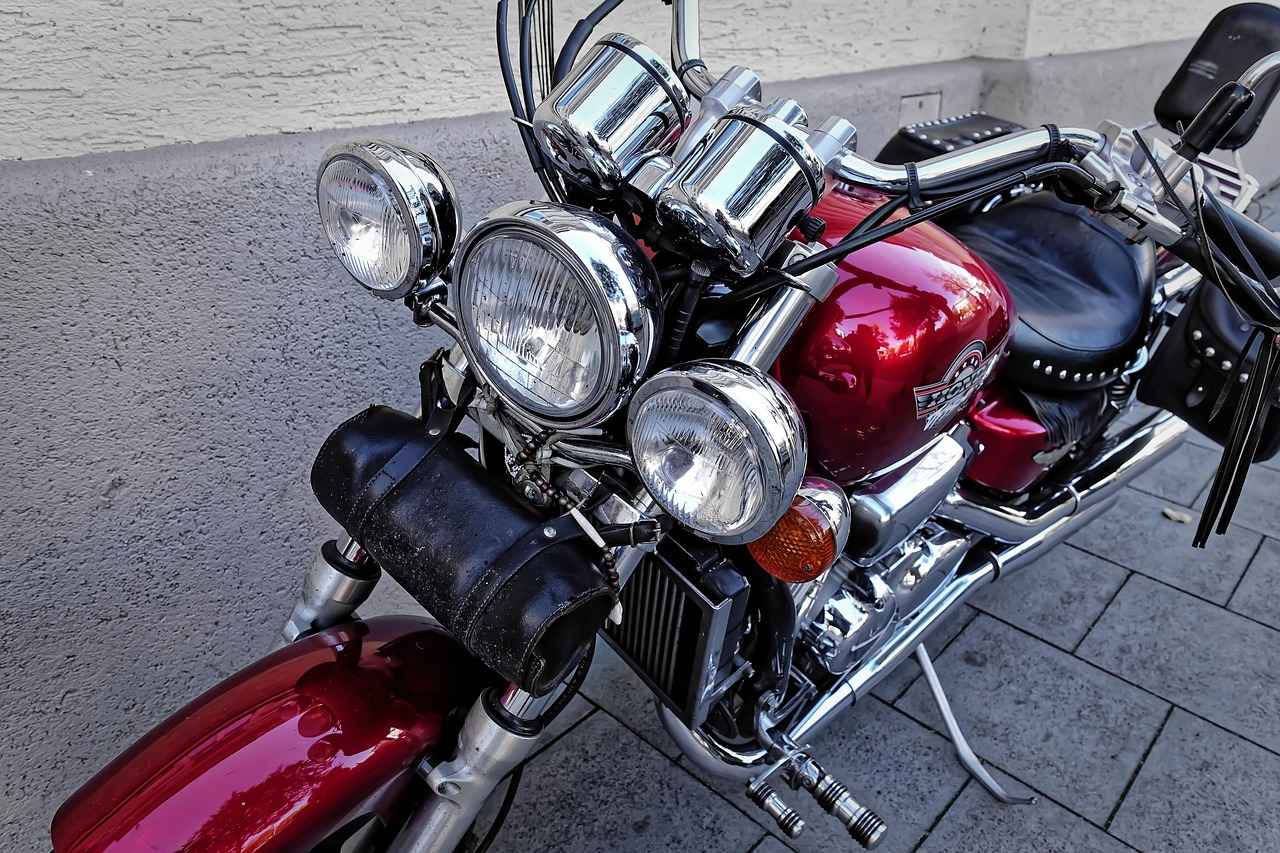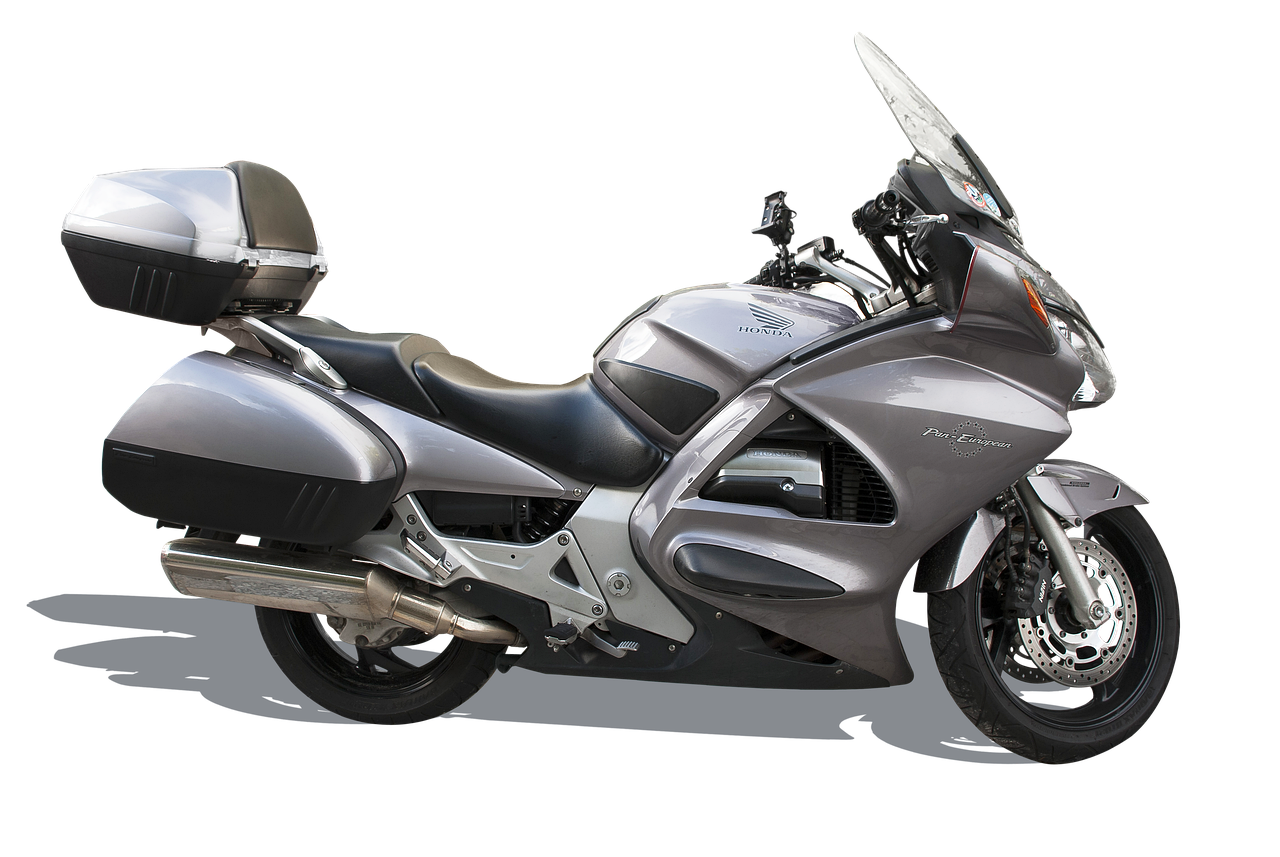The 1996 Honda Civic is often celebrated as a landmark vehicle in the compact car segment, representing a blend of efficiency, reliability, and innovative design. This article delves into the various aspects that contribute to its enduring legacy, including its design, performance, and significant impact on the automotive industry, while also addressing common questions and insights from enthusiasts.
Overview of the 1996 Honda Civic
The 1996 Honda Civic marked a significant evolution in compact cars, appealing to a diverse range of drivers. Its combination of style and functionality made it a popular choice for both young drivers and families alike.
Design Features of the 1996 Honda Civic
The design of the 1996 Civic was characterized by its sleek aerodynamic shape and modern aesthetics, which set trends in compact car styling.
- Exterior Styling Elements: The Civic’s sporty profile not only enhanced its visual appeal but also improved fuel efficiency through better aerodynamics.
- Color Options and Customization: Honda offered a variety of color choices, allowing buyers to personalize their vehicles, which contributed to its widespread popularity.
- Interior Comfort and Features: The interior was spacious and thoughtfully designed, prioritizing driver ergonomics and user comfort.
Technological Innovations
The 1996 Civic incorporated several advancements, including enhanced safety features and upgraded audio systems, reflecting Honda’s commitment to an improved driving experience.
Performance and Engine Options
The performance of the 1996 Honda Civic was notable for its efficient engine options, which struck a balance between power and fuel economy.
- Engine Specifications: The Civic was available with multiple engine choices, including a robust 1.6-liter engine, catering to various driving styles.
- Fuel Efficiency Ratings: One of its standout features was impressive fuel efficiency, making it an economical choice for daily commuting and long trips.
Safety Features of the 1996 Honda Civic
Safety was a priority in the 1996 Civic, which included various features designed to protect occupants.
- Crash Test Ratings: The Civic received favorable ratings, showcasing Honda’s dedication to building safe vehicles.
- Standard and Optional Safety Features: This model offered a range of safety features such as airbags and anti-lock brakes, enhancing its appeal to safety-conscious buyers.
The Impact of the 1996 Honda Civic on the Automotive Industry
The 1996 Honda Civic played a crucial role in shaping the compact car segment, influencing design trends and setting benchmarks for fuel efficiency and reliability that many competitors sought to emulate.

Overview of the 1996 Honda Civic
The 1996 Honda Civic is often celebrated as a landmark model in the compact car category, embodying a perfect fusion of efficiency, reliability, and innovative design. This generation of Civic marked a significant evolution in Honda’s approach to compact vehicles, appealing to a diverse array of drivers, from young professionals to families seeking economical transportation.
One of the standout features of the 1996 Honda Civic was its impressive fuel efficiency. With a variety of engine options, including a 1.6-liter engine, drivers enjoyed a harmonious balance of power and economy. This made the Civic an ideal choice for those who commuted daily or enjoyed long road trips.
The design of the 1996 Civic played a crucial role in its popularity. The aerodynamic shape not only enhanced its visual appeal but also contributed to improved fuel efficiency. The sleek lines and sporty profile set new standards in compact car styling, influencing future models across the industry.
Inside, the Civic was designed with driver comfort in mind. The spacious cabin featured quality materials and an ergonomic layout, ensuring that both drivers and passengers enjoyed a pleasant experience. Additionally, the availability of various color options allowed buyers to personalize their vehicles, further enhancing its market appeal.
Technological advancements also marked the 1996 Civic, as it incorporated improved safety features and audio systems. The commitment to safety was evident in its favorable crash test ratings and the inclusion of features such as airbags and anti-lock brakes, which were either standard or available as options.
Overall, the 1996 Honda Civic not only redefined the compact car segment but also set benchmarks for fuel efficiency and reliability that competitors strived to achieve. Its legacy continues to influence the automotive industry, making it a beloved choice among car enthusiasts and everyday drivers alike.

Design Features of the 1996 Honda Civic
The 1996 Honda Civic stands out not only for its performance and reliability but also for its remarkable design features that have left a lasting impact on the automotive landscape. This compact car was a game-changer, combining modern aesthetics with functional elements that appealed to a wide audience.
One of the most striking aspects of the 1996 Honda Civic was its aerodynamic shape. The design team focused on creating a silhouette that minimized drag, which not only improved fuel efficiency but also enhanced the overall driving experience. The smooth curves and sleek lines contributed to a sporty profile, making the Civic visually appealing to a younger demographic.
- Exterior Styling Elements: The Civic’s exterior was characterized by its clean lines and dynamic stance. This design philosophy not only made the car attractive but also functional, as it improved airflow around the vehicle, contributing to better fuel economy.
- Color Options and Customization: Honda offered a diverse palette of colors, including vibrant shades that allowed buyers to express their individuality. This level of customization played a significant role in the car’s popularity across various age groups.
- Interior Comfort and Features: Inside, the Civic was designed with driver ergonomics in mind. The spacious cabin featured high-quality materials and a user-friendly layout, ensuring that both drivers and passengers enjoyed a comfortable ride.
In addition to its aesthetic appeal, the 1996 Honda Civic incorporated several technological innovations. These included improved safety features, such as airbags and anti-lock brakes, reflecting Honda’s commitment to enhancing the driving experience while prioritizing occupant safety.
Overall, the design of the 1996 Honda Civic was a harmonious blend of style and functionality, setting trends in compact car styling that many manufacturers would follow in the years to come. Its lasting legacy continues to influence modern automotive design.
Exterior Styling Elements
The 1996 Honda Civic is celebrated not only for its performance and reliability but also for its striking exterior design. The of the 1996 Civic are a testament to Honda’s commitment to innovation and aesthetics in the compact car segment. This model features a combination of sleek lines and a sporty profile that not only enhances its visual appeal but also contributes to its overall functionality.
The aerodynamic shape of the Civic was meticulously crafted to reduce drag, which in turn improved fuel efficiency and performance. The smooth contours and well-defined edges give the car a modern look that was ahead of its time, making it a favorite among drivers seeking both style and substance. The front end is characterized by a bold grille and sharp headlights, which together create an assertive presence on the road.
In addition to its aerodynamic benefits, the design of the 1996 Civic allowed for improved handling and stability. The low stance and wide track provided a sporty driving experience, appealing to those who valued both aesthetics and driving dynamics. The overall silhouette of the vehicle was designed to convey motion, even when stationary, which was a significant departure from previous models.
| Exterior Features | Description |
|---|---|
| Sleek Lines | Enhance aerodynamics and visual appeal |
| Sporty Profile | Conveys a sense of motion and agility |
| Bold Grille | Creates an assertive front-end presence |
| Sharp Headlights | Modern look with improved visibility |
Furthermore, Honda offered a variety of color options for the 1996 Civic, allowing buyers to express their individuality. This customization aspect contributed significantly to its widespread popularity across various demographics. From vibrant hues to more subdued tones, the color palette was designed to cater to diverse tastes.
Overall, the exterior design of the 1996 Honda Civic not only set a new standard for compact cars but also played a crucial role in its enduring legacy. By combining aesthetic appeal with practical benefits, Honda successfully created a vehicle that resonated with a broad audience, ensuring its place in automotive history.
Color Options and Customization
The 1996 Honda Civic stands out not only for its performance and reliability but also for its remarkable customization options. One of the most appealing aspects of this model was the extensive variety of color choices available to buyers, which allowed them to express their personal style and preferences.
Honda offered a palette that included vibrant hues and classic shades, catering to a diverse range of tastes. Some of the popular colors included:
- Champagne Gold
- Electron Blue Pearl
- Flame Red
- Black
- White
This variety not only enhanced the aesthetic appeal of the Civic but also contributed significantly to its widespread popularity among different demographics. Whether it was a young driver looking for a sporty vibe or a family seeking a reliable vehicle, the range of colors allowed each buyer to find a Civic that suited their personality.
Moreover, the ability to customize extended beyond just color. Honda also offered various trim levels and accessories, enabling owners to personalize their vehicles further. Features such as alloy wheels, sunroofs, and upgraded audio systems could be added to enhance both the visual and functional aspects of the car.
The emphasis on personalization through color and features played a crucial role in the Civic’s success during the 1996 model year. It not only attracted buyers looking for a compact car but also those who valued individuality and style in their automotive choices. This focus on customization helped the Civic maintain its status as a beloved choice in the compact car market.
Interior Comfort and Features
The interior of the 1996 Honda Civic was meticulously crafted to prioritize user comfort and convenience, making it a standout choice among compact cars of its era. With a focus on spaciousness and quality, the Civic’s cabin was designed to cater to the needs of both the driver and passengers.
One of the most notable aspects of the interior was its spacious seating. The Civic offered ample legroom and headroom, allowing for a comfortable ride even on longer journeys. This thoughtful design ensured that all occupants could enjoy a relaxed experience, which was particularly appreciated by families and commuters alike.
The use of quality materials throughout the interior added a touch of sophistication to the Civic. From the soft-touch surfaces to the well-designed dashboard layout, every detail was considered. The materials not only enhanced the aesthetic appeal but also contributed to the overall durability of the vehicle, ensuring it could withstand the rigors of daily use.
The layout of the dashboard was another highlight, as it prioritized ergonomics and ease of use. Controls were intuitively placed, allowing drivers to access essential functions without distraction. The visibility from the driver’s seat was optimized, providing a clear view of the road and reducing blind spots, which is crucial for safe driving.
- Storage Solutions: The Civic featured numerous storage compartments, including door pockets and a center console, ensuring that personal items could be easily stowed away.
- Sound System: Many models came equipped with an upgraded audio system, enhancing the driving experience with quality sound.
- Climate Control: The air conditioning system was efficient, providing comfort regardless of the weather conditions outside.
Overall, the 1996 Honda Civic excelled in creating an interior environment that was both functional and inviting. Its blend of comfort, quality materials, and user-friendly design made it a beloved choice for drivers seeking a reliable and enjoyable ride.
Technological Innovations
The 1996 Honda Civic stands out not only for its design and performance but also for the significant it introduced. In an era where compact cars were evolving rapidly, Honda made strides that enhanced both safety and entertainment, reflecting its commitment to a superior driving experience.
One of the most notable advancements in the 1996 Civic was the incorporation of improved safety features. This model was equipped with:
- Dual Front Airbags: These provided crucial protection for both the driver and passenger in the event of a collision.
- Anti-lock Braking System (ABS): This feature prevented wheel lock-up during hard braking, allowing for better steering control.
- Reinforced Body Structure: The Civic’s design included crumple zones that absorbed energy during impacts, enhancing occupant safety.
In addition to safety, the 1996 Civic also made significant upgrades to its audio systems. The car featured:
- AM/FM Stereo with CD Player: This was a significant upgrade from previous models, providing drivers with a modern music experience.
- Optional Premium Sound System: For those who desired a richer audio experience, an optional premium sound system was available, enhancing the overall driving ambiance.
The 1996 Civic was also at the forefront of fuel efficiency technology. Its engine management system optimized fuel delivery, which not only improved performance but also contributed to its impressive fuel economy ratings. This innovation made the Civic a preferred choice for environmentally conscious drivers.
Overall, the in the 1996 Honda Civic not only improved safety and entertainment but also set new standards for compact cars, ensuring its place in automotive history.

Performance and Engine Options
The 1996 Honda Civic is renowned for its impressive performance and engine options, which significantly contributed to its popularity among drivers. This compact car was designed to provide a harmonious blend of power and fuel efficiency, making it an ideal choice for a wide range of consumers, from daily commuters to enthusiastic drivers.
The performance of the 1996 Honda Civic was characterized by its efficient engine options, which provided a balance of power and fuel economy, making it a favorite among drivers. The Civic came equipped with a variety of engine choices, allowing drivers to select the one that best suited their needs.
One of the standout features of the 1996 Honda Civic was its versatile engine lineup. The most popular option was the 1.6-liter inline-four engine, which offered a spirited driving experience while maintaining excellent fuel efficiency. This engine produced approximately 106 horsepower and was paired with either a five-speed manual or a four-speed automatic transmission, catering to different driving preferences.
The Civic’s fuel efficiency ratings were among the best in its class. With an EPA rating of up to 32 miles per gallon in the city and 38 miles per gallon on the highway, it quickly became a top choice for those looking to save on fuel costs. This impressive economy did not come at the expense of performance; drivers could enjoy a responsive and engaging ride without frequent trips to the gas station.
The 1996 Honda Civic was also praised for its nimble handling and responsive steering. The car’s lightweight design contributed to its agility, making it easy to maneuver in urban settings while still providing stability on the highway. Enthusiasts often remarked on the Civic’s ability to offer a fun driving experience, further solidifying its status as a beloved compact car.
Overall, the performance and engine options of the 1996 Honda Civic played a pivotal role in its success, combining efficiency with an enjoyable driving experience that appealed to a diverse range of drivers.
Engine Specifications
The 1996 Honda Civic is often celebrated for its impressive range of engine options, catering to a diverse array of driving preferences. This flexibility allowed it to appeal to both the performance-oriented driver and those seeking efficiency and reliability.
The 1996 Honda Civic came equipped with several engine choices, enabling drivers to select the performance level that best matched their individual needs. Among these options was a 1.6-liter engine, known for its robust performance and smooth operation. This engine delivered a commendable balance of power and fuel efficiency, making it a popular choice for many.
- 1.5-liter Engine: This engine option provided a more economical choice, perfect for daily commutes and city driving.
- 1.6-liter Engine: The standout option, offering enhanced performance and responsiveness, ideal for those who enjoyed a spirited driving experience.
- Performance Variants: Certain models also featured performance-tuned variants, catering to enthusiasts looking for a sportier feel.
With the 1.6-liter engine, drivers experienced a significant boost in acceleration, making merging onto highways and overtaking slower vehicles a breeze. Its engineering emphasized not only power but also fuel efficiency, with many owners reporting impressive mileage figures.
Additionally, the Civic’s engine options were complemented by a choice between manual and automatic transmissions, further enhancing the driving experience. This adaptability allowed drivers to choose how they engaged with the vehicle, whether they preferred the control of a manual gearbox or the convenience of an automatic.
Overall, the engine specifications of the 1996 Honda Civic played a crucial role in establishing its reputation as a versatile and reliable compact car, appealing to a wide range of consumers and setting a standard in the automotive market.
Fuel Efficiency Ratings
The 1996 Honda Civic is widely recognized for its remarkable fuel efficiency, a feature that has contributed significantly to its enduring popularity among car buyers. With a focus on both economy and performance, this model set a new standard in the compact car market.
Equipped with a range of engine options, the Civic offered drivers the flexibility to choose a configuration that suited their lifestyle. The 1.6-liter engine was particularly notable, providing a balance of power and efficiency that appealed to a diverse audience. This engine was designed to maximize fuel economy without sacrificing performance, allowing for a smooth driving experience whether commuting in the city or embarking on long road trips.
In terms of fuel efficiency ratings, the 1996 Honda Civic achieved impressive numbers, often surpassing 30 miles per gallon in city driving and reaching up to 38 miles per gallon on the highway. These ratings made it an economical choice for drivers looking to minimize their fuel expenses while enjoying a reliable vehicle.
- City Fuel Economy: Up to 30 MPG
- Highway Fuel Economy: Up to 38 MPG
- Combined Fuel Economy: Approximately 33 MPG
Such fuel efficiency not only reduced the frequency of refueling but also had a positive impact on the environment by lowering carbon emissions. This commitment to sustainability resonated with eco-conscious consumers and helped solidify the Civic’s reputation as a responsible choice in the automotive market.
Additionally, the Civic’s lightweight design and aerodynamic shape further enhanced its fuel efficiency. Honda’s engineering team focused on creating a vehicle that not only performed well but also contributed to lower operating costs, making the 1996 Honda Civic a standout option for both daily commuting and long-distance travel.

Safety Features of the 1996 Honda Civic
The 1996 Honda Civic was a significant model in the compact car segment, particularly due to its commitment to safety. As the automotive industry began to recognize the importance of occupant protection, Honda integrated several innovative features into the Civic that not only met but often exceeded the safety standards of the time.
- Advanced Airbag System: The 1996 Civic was equipped with dual front airbags, which provided essential protection in the event of a collision. This feature was a major advancement, as it helped reduce the risk of injury to both the driver and front passenger.
- Anti-lock Braking System (ABS): For those who opted for the ABS package, this technology ensured that the wheels would not lock up during sudden braking, allowing for better control and stability on slippery surfaces.
- Reinforced Body Structure: The Civic’s design included crumple zones that absorbed impact energy, protecting occupants during a crash. This reinforced structure was a key factor in the vehicle’s favorable crash test ratings.
- Child Safety Features: Recognizing the importance of child safety, the 1996 Civic came with rear seat child safety seat anchors, making it easier for families to secure their little ones while on the road.
In various crash tests conducted by safety organizations, the 1996 Honda Civic consistently received commendable ratings, reflecting Honda’s commitment to building safe vehicles. The incorporation of these safety features not only enhanced the Civic’s appeal among consumers but also established a benchmark for future models. As safety standards continued to evolve, the Civic remained a frontrunner, demonstrating Honda’s dedication to occupant protection and driving security.
Overall, the 1996 Honda Civic set a high standard in the compact car market, proving that safety and performance could coexist harmoniously. With its robust safety features, it offered peace of mind for drivers and passengers alike, making it a popular choice for families and commuters during its time.
Crash Test Ratings
The 1996 Honda Civic is often remembered not just for its style and performance, but also for its commitment to safety. In an era when vehicle safety was becoming increasingly important, the Civic stood out by achieving impressive crash test ratings. This achievement was a testament to Honda’s unwavering dedication to engineering vehicles that prioritize the well-being of drivers and passengers alike.
During the mid-1990s, the automotive industry was witnessing a shift towards greater safety awareness among consumers. The 1996 Civic was designed with this in mind, incorporating various safety features that helped it excel in crash tests. These ratings were not merely numbers; they represented peace of mind for those who chose to drive this compact car.
One of the key aspects of the Civic’s safety performance was its robust structure, which was engineered to absorb impact effectively. The incorporation of advanced materials and design techniques allowed the Civic to withstand collisions better than many of its competitors. This focus on structural integrity was complemented by the inclusion of airbags and seatbelt pretensioners, which further enhanced occupant protection.
Moreover, the Civic’s favorable crash test results were a significant selling point for safety-conscious consumers. Buyers were increasingly looking for vehicles that not only offered great fuel efficiency and reliability but also ensured their safety on the road. The Civic’s reputation for safety helped solidify its position in the market, making it a popular choice among families and individuals alike.
In summary, the 1996 Honda Civic’s favorable crash test ratings reflected Honda’s commitment to building safe vehicles. These ratings provided consumers with the assurance they needed when choosing a compact car, ultimately contributing to the Civic’s enduring legacy in the automotive industry.
Standard and Optional Safety Features
The 1996 Honda Civic was not only celebrated for its performance and design but also for its robust commitment to safety. In an era where safety features were becoming increasingly important to consumers, Honda ensured that the Civic met and exceeded expectations.
The 1996 Civic offered a comprehensive suite of safety features that catered to the needs of safety-conscious buyers. Among these were dual front airbags, which provided crucial protection in the event of a collision. This feature was particularly appealing at a time when many competitors still offered airbags as optional equipment. By making them standard, Honda demonstrated its commitment to occupant safety.
Another significant safety feature was the anti-lock braking system (ABS). This technology prevented the wheels from locking up during hard braking, enhancing vehicle control and reducing stopping distances on slippery surfaces. While ABS was available as an option on some trims, its inclusion showcased Honda’s foresight in anticipating the demands of the market and the evolving safety standards.
In addition to airbags and ABS, the 1996 Civic was designed with a rigid body structure that absorbed impact energy effectively, further protecting passengers during accidents. The vehicle’s design incorporated crumple zones, which were engineered to deform in a controlled manner, thereby dissipating energy away from the cabin area.
Moreover, the Civic’s safety features extended beyond just collision protection. The model was equipped with child safety locks on rear doors, providing parents with peace of mind when traveling with young children. This attention to detail in safety features helped the Civic to stand out in a competitive market.
Overall, the 1996 Honda Civic’s emphasis on safety, with its combination of standard and optional features, not only enhanced its appeal to buyers but also set a benchmark for safety in compact cars that many manufacturers would strive to follow in the years to come.

The Impact of the 1996 Honda Civic on the Automotive Industry
The 1996 Honda Civic is often regarded as a landmark model in the compact car segment, leaving an indelible mark on the automotive landscape. This vehicle not only showcased Honda’s commitment to fuel efficiency and reliability but also set a new standard for design and performance that competitors aspired to replicate.
During its time, the 1996 Civic emerged as a benchmark for compact cars, combining innovative engineering with a stylish aesthetic. Its aerodynamic profile and thoughtful design elements contributed to improved fuel economy, capturing the attention of environmentally conscious consumers. The Civic’s fuel efficiency ratings were impressive, often exceeding those of its rivals, making it a top choice for daily commuters.
Moreover, the 1996 Honda Civic played a significant role in influencing design trends within the automotive industry. Its sleek lines and modern look inspired many manufacturers to rethink their compact car designs. The Civic’s popularity was further enhanced by a wide array of color options and customization features, allowing buyers to express their individuality.
In terms of performance, the Civic was equipped with several engine options, including a robust 1.6-liter engine that offered a perfect blend of power and efficiency. This versatility appealed to a broad audience, from young drivers seeking a sporty ride to families needing a reliable vehicle.
Safety was another area where the 1996 Civic made strides. With favorable crash test ratings and a suite of safety features such as airbags and anti-lock brakes, Honda demonstrated a commitment to occupant protection that resonated with consumers.
In summary, the 1996 Honda Civic not only defined a generation of compact cars but also set a standard that continues to influence automotive design and engineering today. Its legacy endures as a testament to Honda’s innovative spirit and dedication to quality.
Frequently Asked Questions
- What are the key design features of the 1996 Honda Civic?
The 1996 Honda Civic is known for its aerodynamic shape and modern aesthetics, which not only enhance its visual appeal but also improve fuel efficiency. Its sleek lines and sporty profile set trends in compact car styling, making it a favorite among various demographics.
- How does the performance of the 1996 Honda Civic compare to other compact cars?
The performance of the 1996 Honda Civic is impressive, thanks to its efficient engine options, including a robust 1.6-liter engine. This model strikes a balance between power and fuel economy, making it an economical choice for both daily commuting and long-distance travel.
- What safety features were included in the 1996 Honda Civic?
The 1996 Honda Civic prioritized safety with features like airbags and anti-lock brakes, which were either standard or optional. It also received favorable crash test ratings, reflecting Honda’s commitment to building safe vehicles for drivers and passengers alike.
- How did the 1996 Honda Civic impact the automotive industry?
This model played a crucial role in shaping the compact car segment by influencing design trends and setting benchmarks for fuel efficiency and reliability that competitors aimed to emulate. Its success helped redefine what consumers expect from compact cars.



